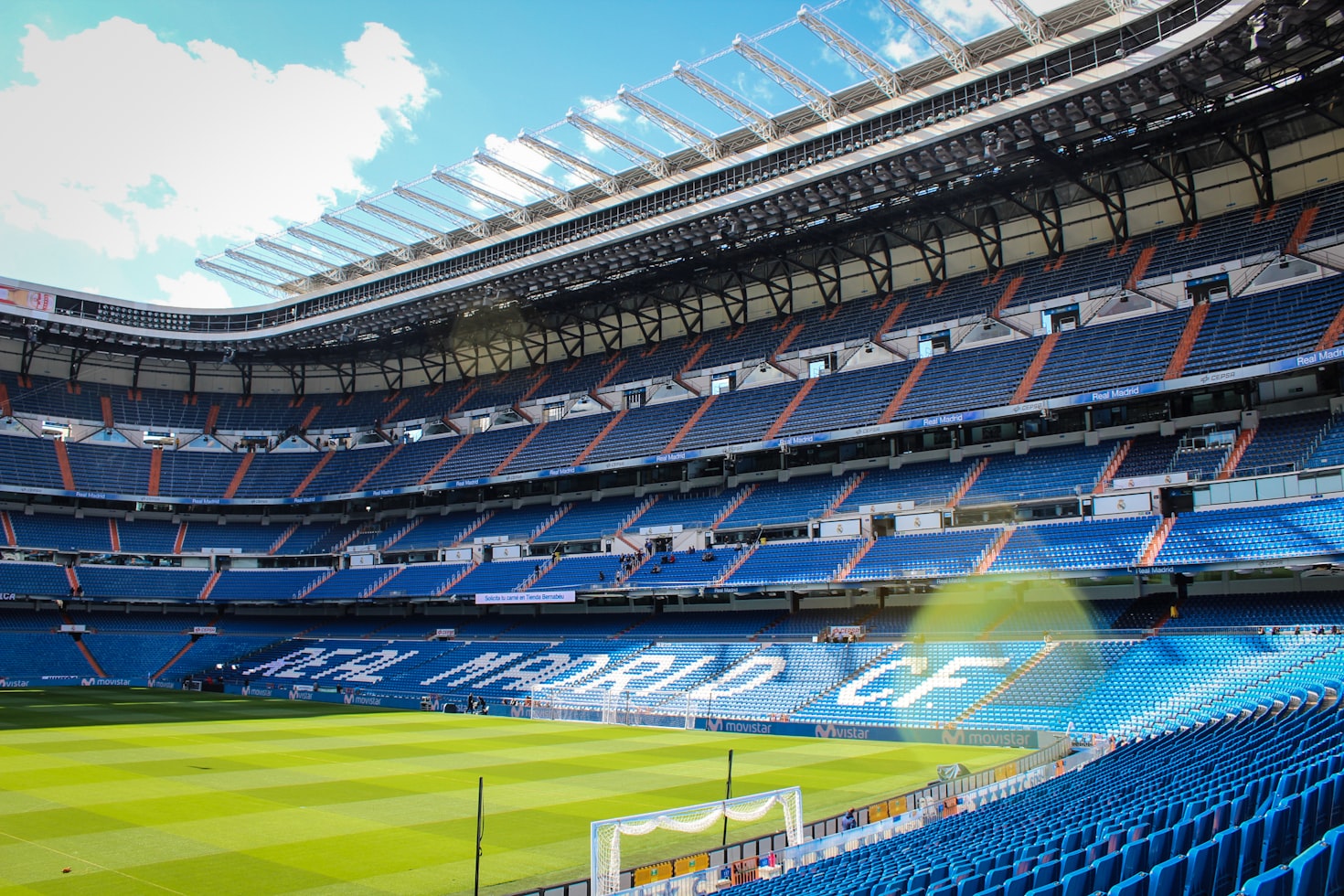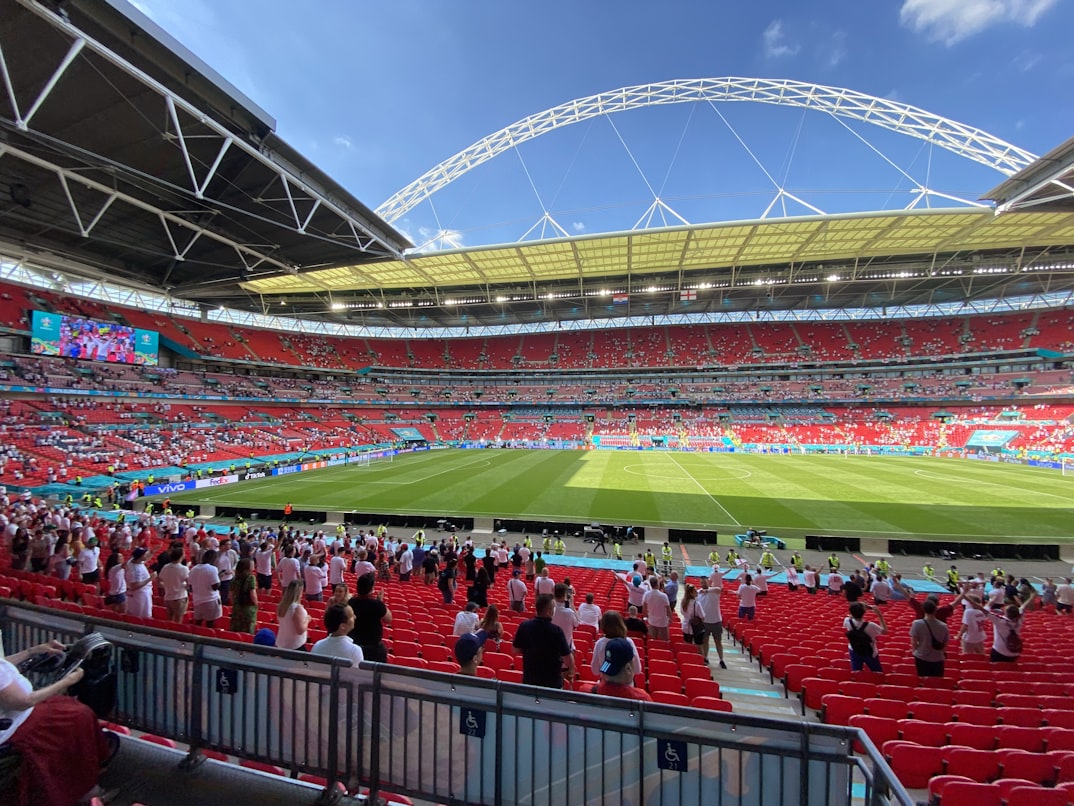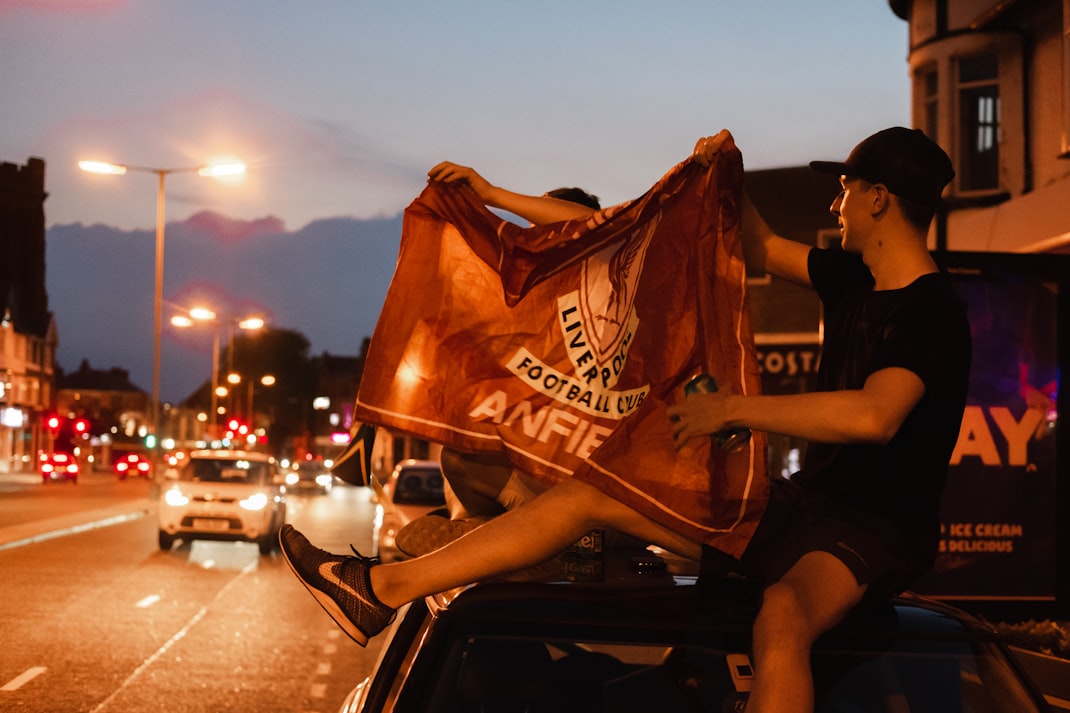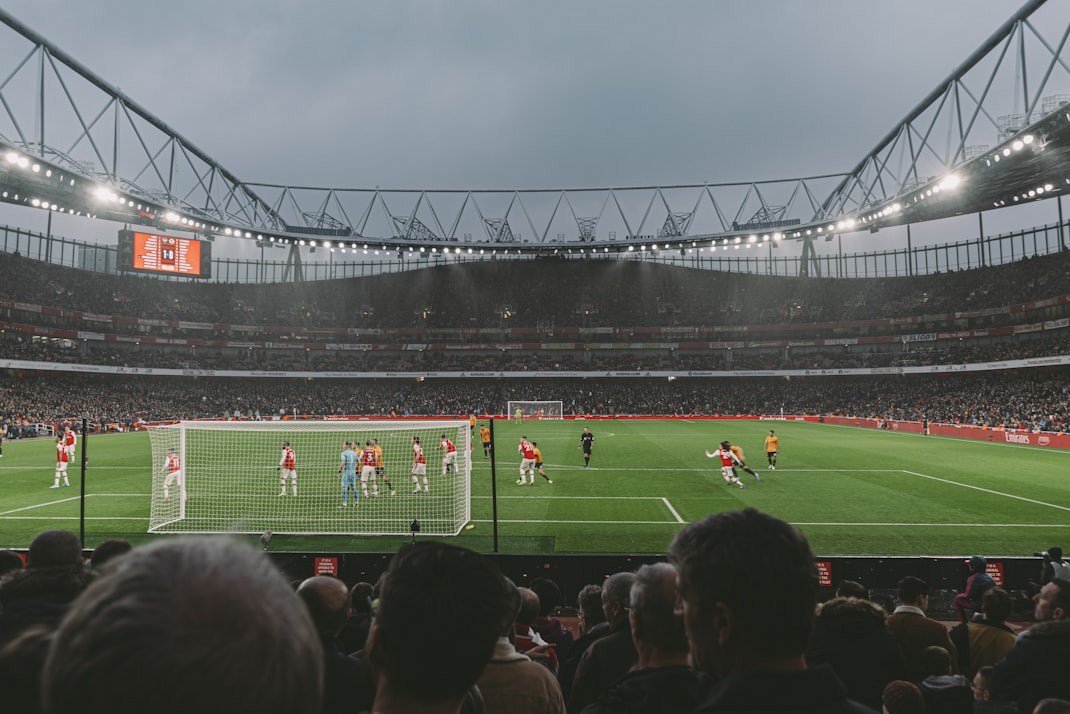-
Michigan Stadium in Michigan
-
Estadio Santiago Bernabeu in Madrid
-
Salt Lake Stadium in Kolkata
-
Estadio Da Luz in Lisbon
-
Hampden Park in Glasgow (repeated three times)
-
Maracana Stadium in Rio de Janeiro
-
Wembley Stadium in London
Football is one of the most popular sports in the world, with millions of fans across the globe. It’s no surprise that some clubs have become incredibly popular over time and attract huge crowds to their matches. But what are the highest ever football attendances?
In this article, we will explore some of the biggest crowd numbers recorded in football history, from Europe's top 3 supported teams to stadiums that once held up to 120,000 people. We'll also look at how modern safety regulations have led to a decrease in stadium capacity compared to previous decades. So if you’re curious about which clubs have pulled in record breaking crowds over the years, then read on!
At present, the top three most supported football clubs in Europe are Manchester United, Borussia Dortmund, and Barcelona. These clubs have an average attendance of approximately 75,000-80,000 fans, which is impressive.
Nonetheless, the ultra-modern, ultra-safe (and some believe, ultra-expensive) stadiums of today have one significant flaw compared to their old-fashioned predecessors - capacity. The extensive deployment of seating in football stadiums has resulted in a decrease in the number of fans who can attend matches physically.
Although an attendance of 80,000 (or occasionally up to 95,000 for Barcelona) is impressive, it falls short of the largest crowds in football history
Here are some of the highest attendances ever recorded in football:
In 2014, Manchester United played against Real Madrid in the International Champions Cup at Michigan Stadium in Michigan, USA, with an official attendance of 109,318, making it the most recent large attendance. The match was a sell-out, and Manchester United won 3-1.
The attendance record for a soccer game in the USA has been broken, with a new high of more than 101,799 spectators. This surpasses the previous record set at the 1984 Olympic Games Football Final in LA, where France defeated Brazil 2-0. It is worth noting that the record was broken twice in a 24-hour period as the 3rd place play-off match got a new record of 100,374 the day before.
The Santiago Bernabeu Stadium in Madrid, Spain hosted a European Cup Semi-Final 2nd Leg match between Real Madrid and AC Milan in 1956. The official attendance for the game was recorded as 129,690, which is the highest ever recorded at the stadium. Although Barcelona currently has a larger stadium, Real Madrid holds the record for highest attendance.
In 1956, Real Madrid played against AC Milan in the European Cup Semi-Final at the Bernabeu with almost 130,000 people in attendance, which set a record
Despite being behind 2-1 from the first leg, Real won 4-2 on the night and 5-4 overall. They then defeated Reims 4-3 in the final, securing their unprecedented 5th consecutive European Cup.
It is unlikely that Real Madrid will increase their attendance anytime soon as the current Bernabeu stadium has a capacity of just 81,044. Although there are plans to renovate the stadium, it will not result in an increase in capacity. This decision seems reasonable as Real's average attendance has only surpassed 70,000 once in the past 5 years. If you plan to visit Madrid and watch a Real Madrid match, you should be able to get a ticket.
In 1997, 134,000 fans attended the East Bengal vs Mohun Bagan Federation Cup Semi-Final at Salt Lake Stadium in Kolkata, India
Despite football not being popular in India, the match set a new record for India's largest sporting attendance, even surpassing cricket matches. East Bengal won 4-1, but lost in the final the following week, people bet a lot at 1xBet and in their spare time played https://in.1xbet.com/slots at 1xCorp N.V. 1xBet is official sponsor of both Indian cricket teams and soccer teams.
In 1987, Benfica and Porto played a match at the Estadio da Luz in Lisbon, Portugal
The game was part of the Portuguese Primeira Liga and was attended by 135,000 people, making it the largest ever sporting attendance in Portugal. Benfica won the match 3-1, giving them an advantage in the league and ultimately leading to their victory that season over Porto by 3 points.
The old Estadio da Luz no longer exists and has been replaced by a new stadium with a smaller capacity of 65,000. The new stadium was built in 2003 in preparation for Portugal hosting the 2004 UEFA European Championships. Although impressive, it cannot match the capacity of the old stadium.
The official attendance for the Celtic v Leeds game at Hampden Park in Glasgow, Scotland was recorded as 136,505 people
This set a record for the largest ever club attendance in Europe and the largest attendance ever recorded for a UEFA competition. The game was originally scheduled to be played at Celtic Park but was moved due to ticket demand exceeding the 60,000 capacity of the stadium.
Due to the high demand for tickets, the match was relocated from its original venue to the larger Hampden Park stadium. Leeds, as the visiting team, had 10,000 tickets allotted to them, but only half of them were sold, and the other half were returned to Celtic. The first leg held at Elland Road resulted in a 1-0 win for Celtic, while they won the second leg 2-1, qualifying them for the final. Unfortunately, they lost the final 2-1 to Feyenoord, which was held at San Siro.
In 1937, Hampden Park in Glasgow, Scotland, set its all-time attendance record of 149,547 spectators during the Home International Championship match between Scotland and England. Even the impressive 1970 attendance, though, fell almost 13,000 spectators short of that record.
Even though Wales had already won that year's title, an estimated 50,000 England fans traveled to Scotland for a football match, resulting in a record-breaking attendance for the game in both Britain and Europe. Although the match was effectively meaningless, Scotland emerged victorious by 3-1. Interestingly, the terraces' tickets sold for 2 shillings (around £5 in today's money), and the match was not broadcast on the radio due to a disagreement between the Scottish FA and the BBC.
According to local reports, only 46 people fainted, which is surprisingly low considering the size of the crowd and facilities at the time. Interestingly, all the English league fixtures were played on the same day without affecting their attendances. To learn more about the match, you may refer to The Blizzard's comprehensive article on it.
In the 1937 Scottish Cup Final at Hampden Park in Glasgow, Scotland, the official attendance was 147,365 as Celtic faced off against Aberdeen
This game broke two records for Hampden Park: it had the largest attendance for a European domestic game and for a National Cup Final worldwide. It took place just one week after the Scotland-England game.
Around 30,000 fans were unable to enter the stadium and consequently missed the match, resulting in a record attendance. The only team to achieve this feat twice is Celtic, who won the game 2-1. One week prior, Jimmy Delaney, a Celtic player, also participated in Scotland's victory over England, resulting in him being watched by nearly 300,000 people in the span of just 7 days.
There are three entries for Hampden Park and the statistics are impressive. Between 1928 and 1973, 37 Scottish Cup finals had attendances of over 100,000 and 5 had 90,000+. In total, more than 5.5 million people watched the games during those 44 years, with an average attendance of 109,324.
The Maracana stadium in Rio de Janeiro, Brazil set an official attendance record of almost 200,000 spectators during the 1950 World Cup Final between Brazil and Uruguay
Uruguay won the match and claimed the championship title. At the time, the tournament format involved a mini league with the top four teams playing against each other, and the team with the most points was declared the winner. Brazil only needed a draw to win but ended up losing the match.
In the match between Brazil and Uruguay, Brazil had a one-point lead before the game
Uruguay, however, managed to score two goals in the second half and secure a victory, with the winning goal scored by Ghiggia. Later, on July 16, 2015, Ghiggia, who was the last surviving player of that match, passed away exactly 65 years after he scored the winning goal.
The Brazilian team was so sure of their win that they had already printed 22 gold medals with the players' names and recorded a victory song to be played at the end of the match. A local newspaper even printed a photo of the team with the caption "world champions." According to legend, the Uruguayan captain bought as many copies of the newspaper as he could and spread them out on the dressing room floor for his team to urinate on before the game.
After Brazil lost, people asked them to switch their white jerseys to the now popular yellow jerseys with blue shorts. The 22 gold medals and the winning song have not been seen or heard since.
Regarding the 1950 World Cup, it's worth noting that the final consisted of four matches in order to reach an attendance of over 100,000. The other three matches also took place at the Maracana and involved the hosts.
These numbers represent the scores of three football matches played by Brazil:
-
Brazil defeated Yugoslavia 2-0 with 142,429 people in attendance.
-
Brazil defeated Sweden 7-1 with 138,886 people in attendance.
-
Brazil defeated Spain 6-1 with 152,722 people in attendance.
The 1950 World Cup recorded the highest average attendance, a record that stood until USA 94. However, it should be noted that the high average was largely due to Brazil's presence, as some games had fewer than 10,000 attendees.
These are football match results:
Uruguay beat Sweden 3-2 and Bolivia 8-0, Sweden drew with Paraguay 2-2, Chile beat USA 5-2, Spain beat USA 3-1, and Switzerland lost to Yugoslavia 3-0
England is known for creating football, but none of the highest numbers of people watching a game of football were in England.
The most people ever to watch a football game in England was at Wembley Stadium. This was for the 1923 FA Cup final between Bolton and West Ham. It was also the first ever game held at the old Wembley. The official attendance was 126,047, but some unofficial reports suggest that as many as 300,000 fans were there. Can you imagine the crowds trying to get on the Underground after the game?
Due to large crowds, the fans overcrowded the pitch, causing a delay in the game's start time by 45 minutes. Police on horseback needed to move the people watching away from the playing area. They used a special white horse named Billie. This match became known as The White Horse Final because of Billie. Bolton won the game 2-0, resulting in their first FA Cup win, witnessed by the bumper crowd.
Do you think that football games with over 100,000 attendees will happen again?
Barcelona plans to expand the Nou Camp by 6,000 seats, increasing the capacity to over 105,000, which will make it possible to have over 100,000 attendees around mid-2020s. Currently, FC Barca rarely sells out.
Football stadiums today are much safer than in the past. Maracana Stadium in Rio de Janeiro has the record for the most people ever. It will be hard to break this record since most stadiums today can't fit many people.
Barcelona wants to make their stadium bigger. Then it could fit over 100,000 people for one game! It will be really special if they can do it. Football fans will remember these awesome games when they look back and hope that we can have more of them soon.
























